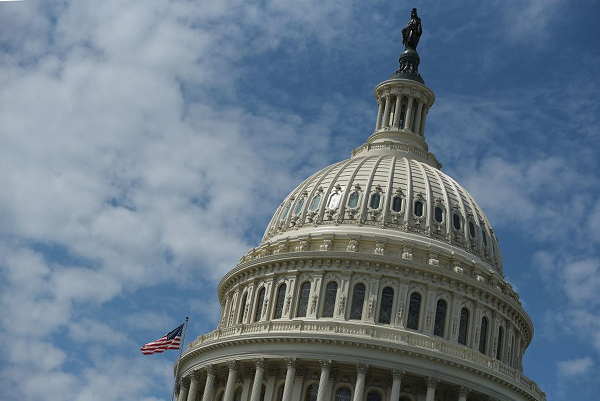
US government shutdown as Senate fails to pass new budget
The US government has begun shutting down many of its services after the Senate failed to agree on a new budget.
A bill to fund the federal government until 16 February did not receive the required 60 votes amid a bitter dispute over immigration and border security.
Advertisement
It is the first shutdown ever to happen while the same party, the Republicans, controls Congress and the White House.
The impasse will affect hundreds of thousands of federal workers, and the recriminations have already begun.
The White House accused Democrats of "[putting] politics above our national security, military families, vulnerable children, and our country's ability to serve all Americans".
But the leading Senate Democrat, Chuck Schumer, said President Trump had turned down two bipartisan compromise deals and "did not press his party in Congress".
The last government shutdown was in 2013, and lasted for 16 days.
What is a government shutdown?
As of 00:01 Saturday (05:01 GMT), many federal agencies are no longer open for business - although essential services will continue to run.
Most staff in the departments of housing, environment, education and commerce will stay at home. Half of workers in the treasury, health, defence and transportation departments will also not be going to work on Monday.
National parks and monuments could face closure, which provoked an angry public reaction during the 2013 shutdown.
Visa and passport processing could also be delayed.
But essential services that protect "life or human property" will continue, including national security, postal services, air traffic control, inpatient medical services, emergency outpatient medicine, disaster assistance, prisons, taxation and electricity generation.
Why can the two sides not agree?
The main bone of contention has been Democrats' demands for more than 700,000 undocumented immigrants who entered the US as children to be protected from deportation.
These "Dreamers", as they are known, were granted temporary legal status under a programme established by former President Barack Obama.
In September, Mr Trump announced he was ending the programme and allowing Congress until March to come up with a replacement.
The Republican president and congressional conservatives have been using the issue as a bargaining chip in an attempt to wring concessions from Democrats.
Mr Trump wants funding for tough new border controls, including his proposed US-Mexico wall.
Republicans added a sweetener to the bill in the form of a six-year extension to a health insurance programme for children in lower-income families.
But Democrats want this programme extended permanently.
The legislative negotiations went up in flames last week after Mr Trump allegedly complained the US was letting in immigrants from certain "shithole countries".
What happens now?
Despite blaming each other, both the Republican and Democratic leaders said they would continue to talk over the weekend.
Mick Mulvaney, the head of the Office of Management and Budget (OMB), said there was a "really good chance" it could be resolved before government offices open again on Monday.
But the White House took a tough line after the midnight deadline passed, tweeting that it would "not negotiate the status of unlawful immigrants while Democrats hold our lawful citizens hostage over their reckless demands".
However, with mid-term elections looming in November, neither party wishes to be held accountable for closing the government.
The shutdown began on the first anniversary of President Trump's inauguration. He has delayed a trip to his Florida resort where he is due to host a party - with attendees paying as much as $250,000 (£180,000; €204,500) - to mark the event.
What happened during the 2013 shutdown?
Many federal employees were forced to take a leave of absence - officially known as being furloughed - during the 16 days of shutdown.
At its peak, some 850,000 employees were off work each day. It cost the government $2bn in lost productivity and led to "significant negative effects on the economy", the OMB said at the time.
Donald Trump, interviewed by Fox and Friends at the time, laid the blame for the shutdown with the then president, Barack Obama.
"The problems start from the top and have to get solved from the top," he said. "The president is the leader, and he's got to get everybody in a room and he's got to lead."




